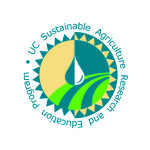vous pouvez toujours sentir manque de temps si préparer impromptu, comme nous le disons souvent «la beauté prend du temps.» Si vous voulez devenir la plus belle mariée
Robe de mariée pas cheril est besoin de prévenir la robe à l’avance, il ne peut pas attendre la veille du mariage que vous retrouvé le budget de mariage est déjà insuffisant, la nécessité de réduire les frais de mariage,mais la mariée est très déprimé.
2016 brudklänning enVacker brudklänning kan bära en ädel ideal feminina, tillsammans för sina väninnor att välja en lämplig Yiyi det!Bröllopsklänningar online Princess Wedding Klänningar Varje kvinna vid tiden för äktenskapet är den vackraste, du vill bli vackrare? En lyxig modegrad fullt brudklänning
brudklänning kan vara en bra omnämnande L egen karisma, nu att dela med flera palatsliknande brudklänning, skriva själv en perfekt brud.Om du gillar sexig klänning. , Nog sexig kvinna, denna Bra brud brudklänning, klassisk palatsliknande klänning, du kan
Reaction of Player :lightweight jersey and very comfortable Yesterday afternoon, the Chinese team was training in the Guangzhou Gymnasium, when the reporter asked Zhao Yunlei the feeling of wearing the new cheap
cheap jerseys online shop jersey , she readily took a shirt from the bag crumpled ball to reporters, and she said with a smile: ” This shirt is light. ”Zhao Yunlei said: “Our material is very light like with the clothes of the tennis King Nadal, Federer, after the sweat, sweat does not drip down to the ground, when we do move, it is easy pace slipping if the sweat drip on the floor.”
Jiangsu Changshu clothing wholesale market-Jiangsu Changshu strokes mall was founded in May 1985, after two years of “development, construction, operation and management”, has developed into one of the country’s largest apparel wholesale market.Hanzhengjie clothing wholesale market in Wuhan-Hanzhengjie Hankou is the earliest history of Central Street, thousands of merchants, commodity flow of the land dispute. Hankou’s name can be said to be named because of Shaanxi traders, namely
Wholesale jerseys online shopthe Han River into the Yangtze River mouth. The Hankou prosperous, and Hanzhengjie inseparable. Mainly in three Shu Street, Canton Lane, large folder Street and a new street along the perimeter, with the center of the mall, the youngest town building two large apparel clothing indoor market. Business area dating square meters, nearly 2,000 business households.
ANTA-ANTA Sports Products Limited, referred to as ANTA Sports, Anta, is China’s leading sporting goods companies, mainly engaged in the design, development, manufacture and marketing of ANTA brand sporting goods, including sports footwear, apparel and accessories. Anta sweatshirt design advantages, warm stretch knit fabric, using Slim version of model, more personal fit, bid farewell to bloated, so wearing more stylish.GUIRENNIAO-This logo is a spiritual totem, smooth graphics implication unstoppable force; flexible deliver an elegant arc movement, strength and speed of the United States, a symbol of passion and rationality publicity “Heart” and “meaning”, “concept” unity; pass the fearless and enterprising mind, showing
Wholesale jerseys china shopbeyond the realm of self, to unstoppable force to create the future.XTEP-Xtep (China) Co., Ltd. is a comprehensive development wholesale jerseys china shop, production and marketing of Xtep brand (XTEP) sports shoes, clothing, bags, caps, balls, socks mainly large sporting goods industry enterprises.
There are a lot of fans in identifying the authenticity of the above cheap jerseys have great distress, so here to i will show you some methods to definitely affordable inexpensive cheap jerseys : Firstly, we should look at if it is working fine. China has been called the world’s factory, a lot cheap jerseys factories in China have foundries, but our cheap jerseys are all from here! Secondly, should to see whether it is the , we all know that it is difficult to get out of print once a genuine cheap
cheap jerseys free shippingjersey was print. and we have all kind of stocka on the whole website, in other words, we have all you want ! Finally, look at the price, our price is not necessarily the lowest in the whole website but it must be most fair on the whole website, we certainly you will not regret later when you buy it. Of course, except that cheap jerseys, we also have the other products, such as socks, leggings and some other related products, everyone can enjoy the best services of here!We will bring appropriate surprises in a particular period of time, such as Christmas Day or a certain time the team to win, and we are able to bring about a corresponding markdown activity for the fans! Are you interested in ?cheap jerseys free shipping!!! So coming to purchase it!!!
![]()




